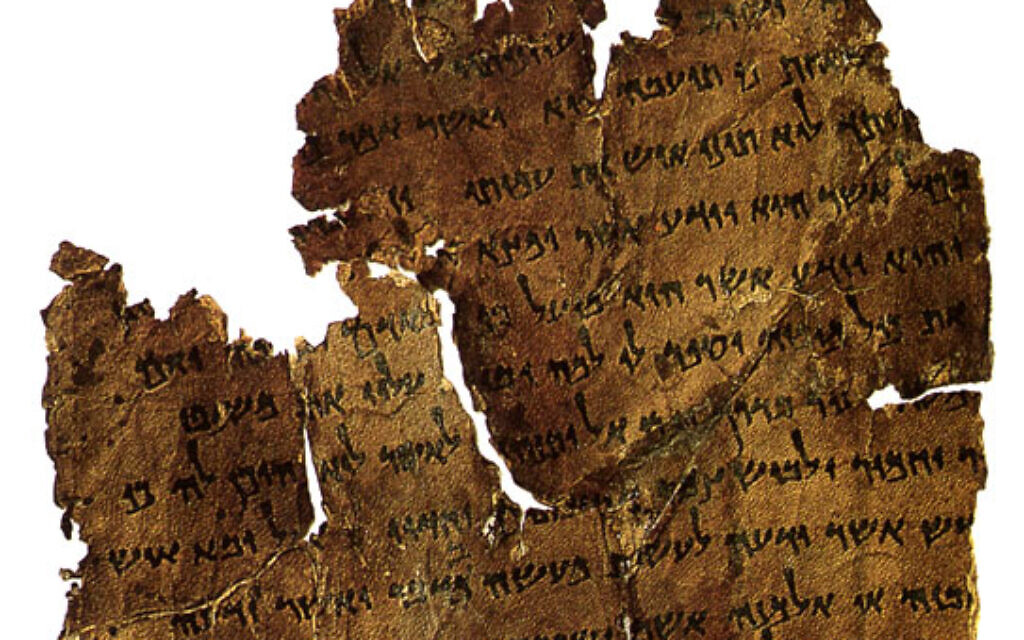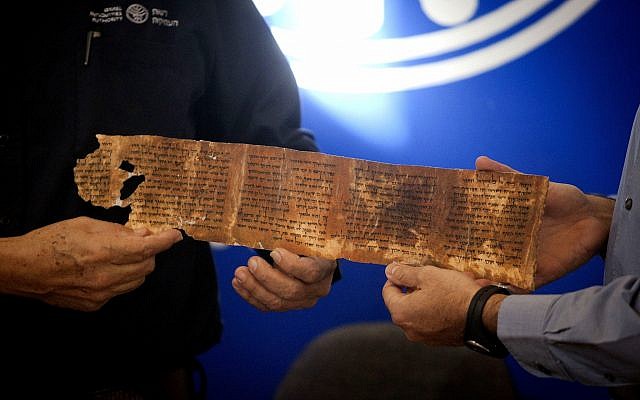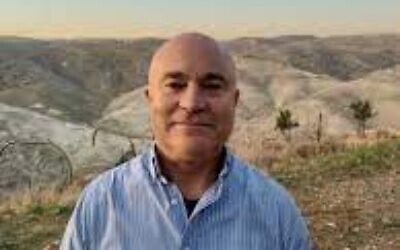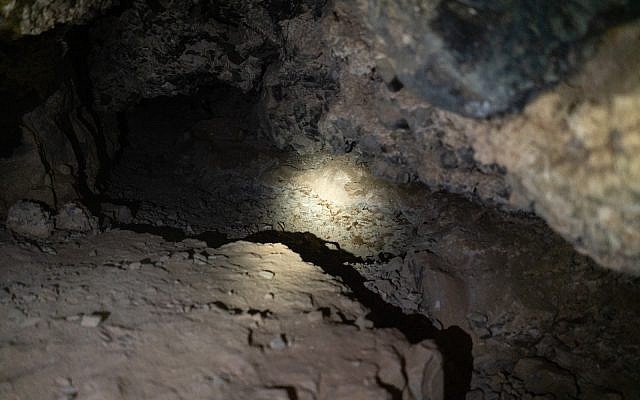Israeli researchers believe 1,000-year-old document from Cairo Geniza shows site hosted an annual event where Essene sect gathered, bringing religious scriptures they left behind

A more than 1,000-year-old document from a collection of ancient Jewish manuscripts may explain why so many of the Dead Sea Scrolls have been uncovered in the caves of the Qumran region near the Dead Sea, according to researchers from Ben Gurion University.
The paper in question, known as the “Damascus Document,” is part of the Cairo Geniza, a collection of hundreds of thousands of ancient documents discovered in Cairo’s Ben Ezra Synagogue in the 19th century.
In a new study, Ben Gurion University archaeologist Daniel Vainstub and his team of researchers argue that the Damascus Document shows Qumran was the site of an annual ceremony known as the Covenant of Renewal, where the ancient, mystical Jewish sect known as the Essenes would gather from towns across the Land of Israel.
Scholars have long associated the Dead Sea Scrolls with the Essenes.
The gathering was held each year in the Hebrew month of Sivan, the same month as the Shavuot holiday, when Jews mark the renewal of their covenant with God.
“I argue that the Damascus Document contains the bylaw or rule that regulates the annual gathering,” Vainstub told Live Science on Monday. “No one noticed this before me.”
“According to the new theory,” Live Science noted, “many of the Dead Sea Scrolls themselves could have been written by Essene communities throughout the country and brought to Qumran at the time of the annual festival to study and be stored there.”
The Damascus Document is a 10th-century document that was copied from an earlier Hebrew source, and received its nickname due to the number of times in which the Syrian city is mentioned in it. Vainstub and his team published their research into the document earlier this summer in the journal Religions.

The relevant passage in the Damascus Document reads as follows: “And all [the inhabitants] of the camps shall assemble in the third month and curse anyone who deviates either to the right [or to the left from the] Torah.”

Vainstub argues that the Qumran area’s unusual structure makes it the best candidate for the site of such a gathering. “The site of Qumran, with its facilities, caves and surfaces, accords with the evidence for the annual gathering that emerges from the scrolls,” he writes in the study published in Religions.
He adds that “some dozens of permanent residents of Qumran… had to host many hundreds of people at the site once a year in ever-increasing numbers.”
The Damascus Document-backed theory, he says, explains why the structures excavated at Qumran were shaped as they were and why a pantry was found filled with vessels large enough to serve thousands of pilgrims.

Vainstub told Live Science that the document explains the mystery behind the large open-air terrace in Qumran known as the “southern esplanade,” saying that it was an outdoor eating area walled off from the nearby cemetery to prevent pilgrims from becoming spiritually impure from the dead bodies.
His theory also accounts for the large size of the numerous ritual baths at the site, which were an essential part of Jewish worship at that time.
“My theory is also consistent with the fact that the scrolls did not necessarily originate from Qumran, but rather were brought to the caves from all over the country and left in the caves over the decades,” Vainstub writes.
The Dead Sea Scrolls are a library of theological and legal writings from the third century BCE to the first century CE that were found starting from 1947 through the 1960s. The fragile scrolls and fragments were largely found in 11 caves surrounding the ancient site of Qumran, on the northern tip of the Dead Sea in the Judean Desert. In sum they create a corpus of some 25,000 fragments that make up 1,000 manuscripts. Other scroll sites include more southern Dead Sea locations, such as Wadi Murabba’at, Naḥal Tze’elim, Naḥal Ḥever, and Masada.
In a stunningly rare discovery in March, dozens of scroll fragments were excavated during a daring rescue operation. Most of the newly discovered scroll fragments — the first such finds in 60 years — are Greek translations of the books of Zechariah and Nahum from the Book of the Twelve Minor Prophets, and are written in two scribal hands. Only the name of God is written in Hebrew in the texts.
As reported by The Times of Israel
